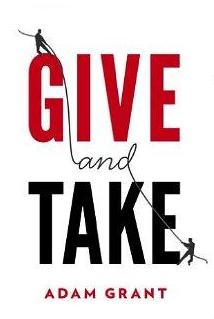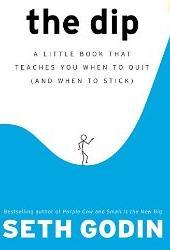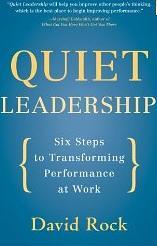For over a decade, the focus of leadership and professional development has been to emphasize people’s strengths rather than concentrate on weaknesses. The concept was popularized by Gallup researchers and led to a series of StrengthsFinder books and tools. For those unfamiliar, the StrengthsFinder is an assessment that reveals dominant “themes” that help people focus on their strengths and abilities and center their work and lives on them. The premise is that it makes more sense to leverage strengths and talents versus trying to address shortcomings.
Welcome to Beyond the Jargon
Developing potential? Focus on strengths and shortcomings
Author: Diane Hamilton, Date: 10/24/2013What We Are Reading
Author: admin, Date: 10/4/2013Business Books
Give and Take: A Revolutionary Approach to Success
Adam Grant
Viking Adult, 2013
From the Book: For generations, we have focused on the individual drivers of success: passion, hard work, talent, and luck. But today, success is increasingly dependent on how we interact with others. It turns out that at work, most people operate as either takers, matchers, or givers. Whereas takers strive to get as much as possible from others and matchers aim to trade evenly, givers are the rare breed of people who contribute to others without expecting anything in return.
The Four-Hour Workweek
Timothy Ferris
Harmony, 2009
From the Book: Forget the old concept of retirement and the rest of the deferred-life plan–there is no need to wait and every reason not to, especially in unpredictable economic times. Whether your dream is escaping the rat race, experiencing high-end world travel, earning a monthly five-figure income with zero management, or just living more and working less, The 4-Hour Workweek is the blueprint.
Self-Assessment versus Feedback
Author: Diane Hamilton, Date: 9/18/2013 There are times when it is helpful to allow employees to analyze or assess their own performance versus providing them with your own feedback or perspective. This allows the person to think about what they did—what worked and what didn’t. As the leader/manager, you can certainly add to the conversation; however, the starting point is to take more of a coaching role and allow the employee to comment on the situation.
There are times when it is helpful to allow employees to analyze or assess their own performance versus providing them with your own feedback or perspective. This allows the person to think about what they did—what worked and what didn’t. As the leader/manager, you can certainly add to the conversation; however, the starting point is to take more of a coaching role and allow the employee to comment on the situation.
It involves three simple steps outlined below. Choose which questions best fit the situation and adapt to meet your needs.
1. Ask about what went well.
Improve Team Decision-Making
Author: Diane Hamilton, Date: 8/29/2013I’ve been working with a number of teams lately who seem to struggle with decision-making. A couple of frequent complaints include:
- “Decision-making takes too long. We’re trying to make decisions by consensus but we just never get anywhere.”
- “It doesn’t matter what we say, the manager/leader always makes the decision.”
- “We make a decision but then we just revisit it at the next meeting.”
If these protests sound familiar, you are not alone. It is quite common for teams to have difficulty with decision-making.
What We Are Reading
Author: admin, Date: 8/1/2013Business Books
The Dip: A Little Book That Teaches You When to Quit (and When to Stick)
Seth Godin
Portfolio Hardcover 2007
From the Book: The old saying is wrong—winners do quit, and quitters do win.Every new project (or job, or hobby, or company) starts out exciting and fun. Then it gets harder and less fun, until it hits a low point—really hard, and not much fun at all. And then you find yourself asking if the goal is even worth the hassle. Maybe you’re in a Dip—a temporary setback that will get better if you keep pushing. But maybe it’s really a Cul-de-Sac, which will never get better, no matter how hard you try. According to bestselling author Seth Godin, what really sets superstars apart from everyone else is the ability to escape dead ends quickly, while staying focused and motivated when it really counts.
To Sell Is Human: The Surprising Truth About Moving Others
Daniel Pink
Riverhead Hardcover, 2012
From the Book: Yes, one in nine Americans works in sales. But so do the other eight. Whether we’re employees pitching colleagues on a new idea, entrepreneurs enticing funders to invest, or parents and teachers cajoling children to study, we spend our days trying to move others. Like it or not, we’re all in sales now. To Sell Is Human offers a fresh look at the art and science of selling. As he did in Drive and A Whole New Mind, Daniel H. Pink draws on a rich trove of social science for his counterintuitive insights. He reveals the new ABCs of moving others (it’s no longer “Always Be Closing”), explains why extraverts don’t make the best salespeople, and shows how giving people an “off-ramp” for their actions can matter more than actually changing their minds.
3 Simple Guidelines for Your Organizational Talent
Author: Paul Dillenburg, Date: 7/25/20131. Invest more development dollars and time where you will get the highest return. Do not spend your development dollars equally; high potentials, critical positions, and key leaders (current or future) demand differential attention. Likewise, while all employees should be receiving regular feedback regarding their performance and development, leaders need to be steadfast in providing timely, specific feedback and appreciation to their top talent.
2. Provide opportunities for accelerated development to help current and prospective leaders grow in their jobs and their careers—keep the pipeline filled. Potential opportunities may include individual coaching, mentoring relationships, involvement in key projects or initiatives, internal training, stretch assignments, networking, delegated tasks, participating in organizational meetings or industry conferences.
You’ve Conducted a Survey…Now What?
Author: Diane Hamilton, Date: 7/17/2013It’s a common practice to collect feedback from employees to gauge how things are going. Whether it is an employee opinion survey, an assessment of employee engagement, or a focus group/interview study, many organizations periodically ask employees for their thoughts and/or input. The hard part isn’t asking the questions or collecting the data. It’s what do you do once you have the information.
Next steps
Survey feedback often suggests that employees think that “management won’t do anything with the results.” To avoid this from happening, the senior leadership team should take the following steps after any assessment effort:
Teachable Moment
Author: Paul Dillenburg, Date: 6/27/2013One of the current buzzwords in leadership development seems to be the idea of “teachable moments.” That is, helping a direct report learn from a practical, job related experience as it occurs. An example of a teachable moment that I was able to highlight for an individual I was coaching may shed some light on how to capture these valuable moments. This excerpt is from a previous blog post.
What We Are Reading
Author: admin, Date: 6/19/2013Business Books
Quiet Leadership: Six Steps to Transforming Performance at Work
David Rock
HarperBusiness 2007
From the Book: Improving the performance of your employees involves one of the hardest challenges in the known universe: changing the way they think. The author states that the secret to leading people (and living and working with them) is found in the space between their ears. “If people are being paid to think,” he writes, “isn’t it time the business world found out what the thing doing the work, the brain, is all about?” Supported by the latest groundbreaking research, Quiet Leadership provides a brain-based approach that will help busy leaders, executives, and managers improve their own and their colleagues’ performance. Rock offers a practical, six-step guide to making permanent workplace performance change by unleashing higher productivity, new levels of morale, and greater job satisfaction.
Lean In: Women, Work, and the Will to Lead
Sheryl Sandberg
Knopf, 2013
From the Book: Thirty years after women became 50 percent of the college graduates in the United States, men still hold the vast majority of leadership positions in government and industry. This means that women’s voices are still not heard equally in the decisions that most affect our lives. In Lean In, Sheryl Sandberg examines why women’s progress in achieving leadership roles has stalled, explains the root causes, and offers compelling, commonsense solutions that can empower women to achieve their full potential.
No Offense Intended
Author: Diane Hamilton, Date: 6/6/2013I received a marketing email yesterday from an individual who used a term that could be considered derogatory and offensive. I took note; found myself surprised by the use of the language; and, wondered about a potential lack of awareness as to how the terminology could offend. Well, within twenty-four hours I received a second email sincerely apologizing for the use of the language. The individual indicated that unfortunately she had no idea of the source of the phrase and its derogatory meaning. She went on to say:
“…And I couldn’t be more embarrassed and horrified. Please understand that no offense was intended.”




Recent Posts
-
Five tips for being a great mentor (and four traps to avoid)01/22/2018
-
Compromise Isn’t a Bad Word02/15/2017
-
What We Are Reading05/19/2016
-
Adversity Reveals You01/04/2016
-
Stop the Mind Reading—Give Candid Feedback07/21/2015
-
Creating a High Performing Environment06/05/2015
-
Why you should strive for integration, not balance04/30/2015






